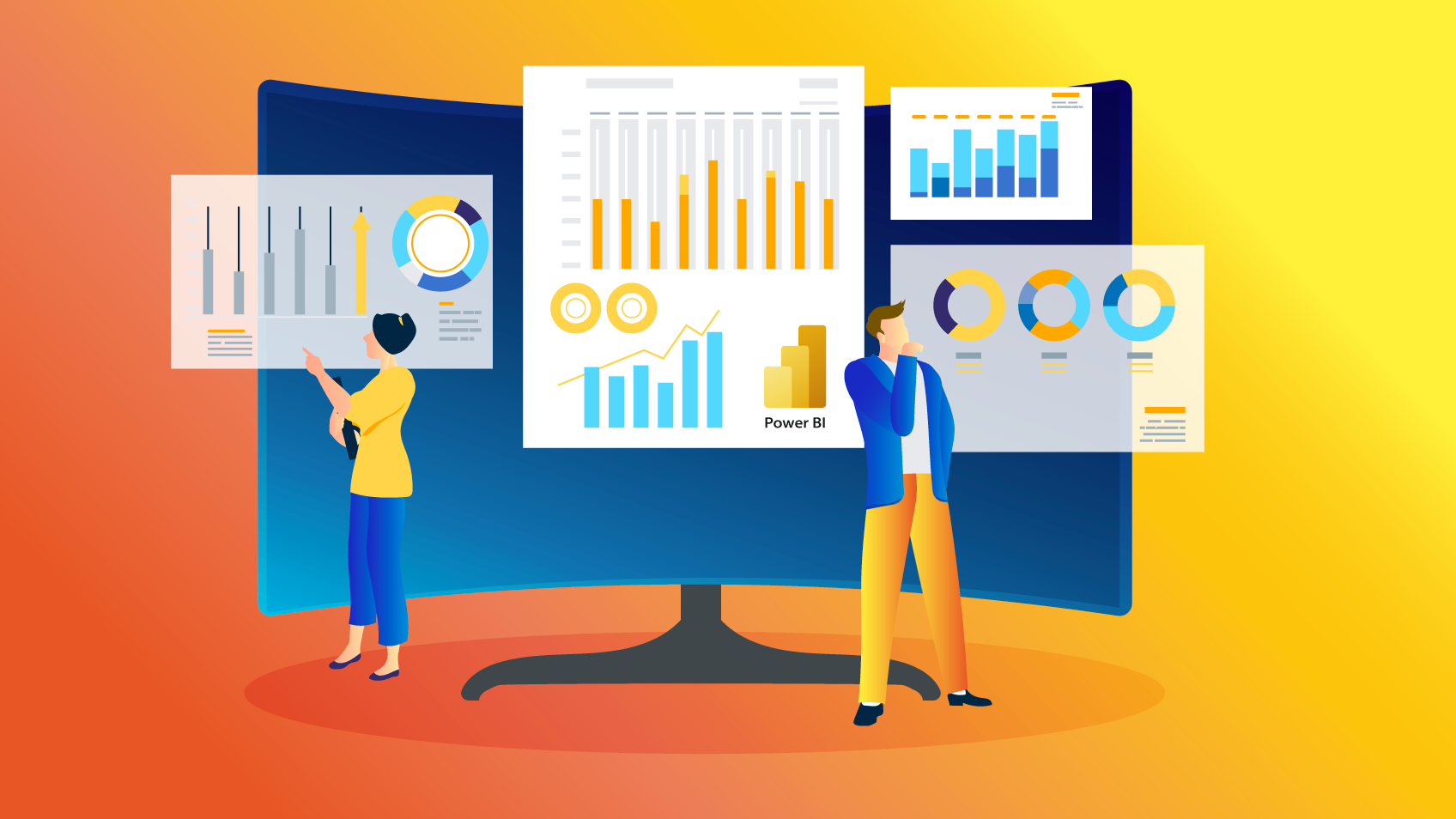In the modern business landscape data is a crucial asset that can either make or break an organization. Power BI and Microsoft Fabric are powerful tools that companies utilize to unlock the power of data. These platforms form the core of business intelligence. They also, when combined with Azure Data Factory they become a powerful force for data analytics and decisions.
Power BI: Your Business Intelligence Companion
Power BI is a tool for business intelligence from Microsoft that helps organizations visualize their information and share information. It allows users to create interactive dashboards and reports, transforming raw information into valuable insight.
Whether you’re a small startup or a large enterprise, Power BI adapts to your needs. Power BI combines seamlessly across many data sources and makes it easy to consolidate data from different systems and databases. With its intuitive drag-and-drop interface even non-technical users will be able to quickly develop insightful reports and analyzes.
Power BI supports real-time processing of data to ensure that you have up-to-date information. Power BI comes with a variety of visualizations to help you present data in an engaging and digestible manner. It is important to be able to share and collaborate on reports. This will help improve decisions within your business and promote a data-driven culture.
Microsoft Fabric The weaving Together of Data Excel
Microsoft Fabric is the base system that connects and orchestrates data across various Microsoft services. It is the fabric that converts your data an easily accessible and usable entity. This enables businesses to gain insight quickly.
Microsoft Fabric is the foundation of consistency and data integrity when businesses have to deal with increasing volumes of data. It connects to a variety of services, from Azure Data Lake Storage and Azure SQL Data Warehouse to Power BI and more. The interconnectivity allows data to flow easily and allow insights to be extracted from multiple sources.
The broad range of Microsoft Fabric is evident in its data transformation capabilities. It is a great tool to collect data, clean and prepare it for analysis, and also ensure that it conforms to the company’s policies on data governance. Microsoft Fabric makes sure that your data is correct as well as reliable and ready to be analyzed.
Azure Data Factory – The Gateway to Data Transformation
Azure Data Factory is an vital component of the modern enterprise intelligence landscape. This cloud-based service enables you to manage and schedule data-driven processes. Azure Data Factory allows for valuable insights by orchestrating data transformation and movement.
Azure Data Factory has numerous strengths, including the ability to integrate with a variety of data sources. Whether your data resides on-premises or in the cloud it can be integrated seamlessly so that you can have an all-encompassing view of your entire data ecosystem. The platform can handle the processing of batch data, real time data streams and big data analytics. This makes it suitable for many applications.
Azure Data Factory has a visual user interface that makes it easier for the process of creating data pipelines. It’s easy to build and manage the workflow of data, even if you’re not a coding expert. Business users can manage their data integration processes and allow them to build data on their own.
Power BI, Microsoft Fabric and Azure Data Factory: The Power Trio
If Power BI, Microsoft Fabric, and Azure Data Factory come together, they create a dynamic trio that can completely transform your data analytics activities. Here’s how they synergize:
1. Data Integration: Azure Data Factory connects to a multitude of data sources, ensuring that your data is readily accessible. Microsoft Fabric orchestrates the data from various services using the data integration capabilities. This ensures that your data is correctly organized, cleansed and ready for analysis in Power BI.
2. Data Transformation: Microsoft Fabric plays a crucial part in the process of data transformation, allowing you to shape your data to meet your needs for analysis. Fabric will ensure that your the data is ready to be used for insight when it comes to cleansing or changing data.
3. Data Visualization: When your data is well-organized and is ready, Power BI takes over. You can design visually appealing dashboards and reports which make data that is complex simpler to comprehend. You can then share these information with your team, fostering data-driven decision-making.
4. Scalability: Azure Data Factory can adapt to growing numbers of data. The combination of Power BI with Microsoft Fabric will ensure that your data is stable and reliable even as your business grows.
5. Power BI & Azure Data Factory can provide real-time information that is vital for a fast and efficient decision making.
Also, you can read our conclusion.
To remain competitive in the business intelligence world, organizations must utilize data efficiently. Power BI combined with Microsoft Fabric and Azure Data Factory can take your business analytics to a new level. Whether you’re looking to create amazing visualizations, maintain data consistency, or streamline the workflow of data, this trio includes everything you need. Make the most of the power of business intelligence and unlock the potential of your data.
